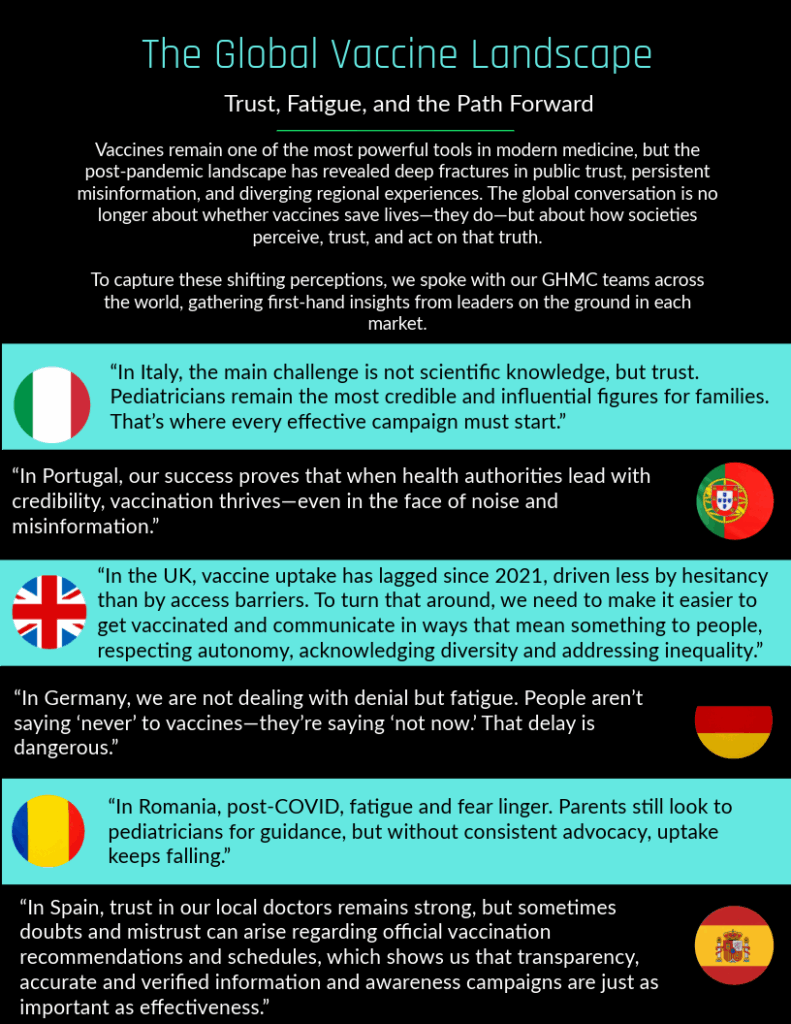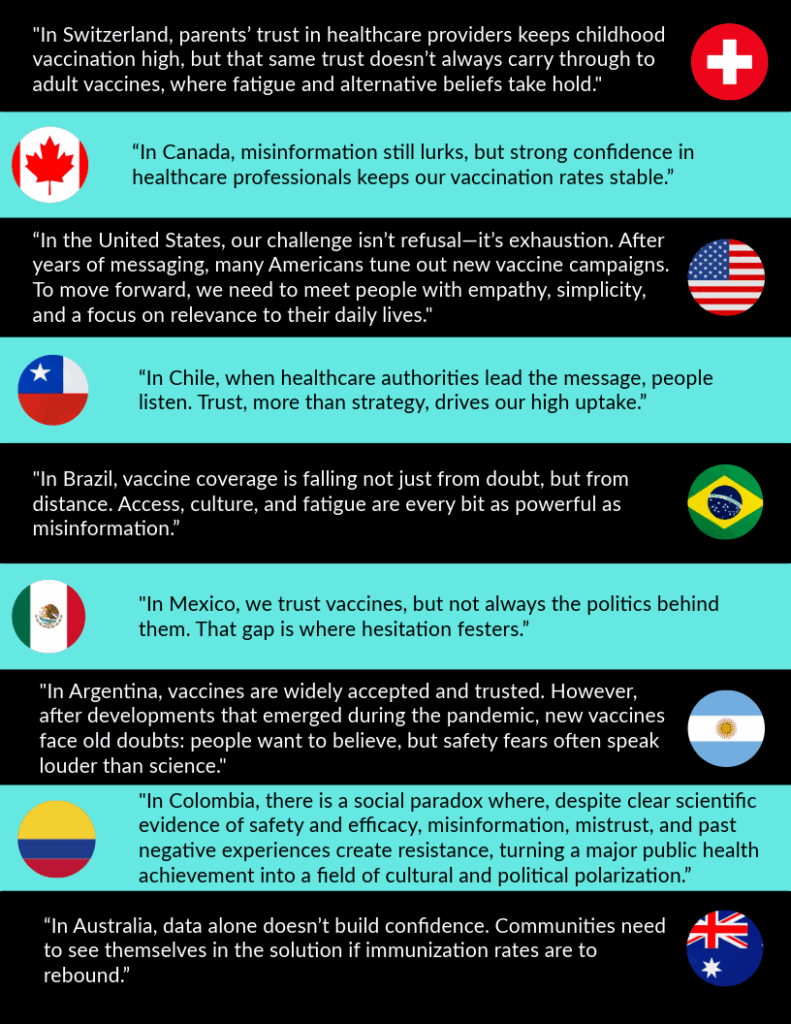by Andrew
Uncategorized



- PR Bom Joins GHMC as Exclusive Partner in South Korea, Strengthening APAC Reach
- Specialist Agency Brings Deep Regulatory Expertise and Client-Centric Approach to a Highly Regulated Market
NEW YORK and SEOUL, July 15, 2025 – Global Health Marketing & Communications (GHMC), the largest and most robust partnership of independent healthcare agencies worldwide, today announced the addition of PR Bom, a South Korea-based agency, to its global network. This new partnership strengthens GHMC’s footprint in the Asia-Pacific region and enhances its capabilities in one of the world’s most tightly regulated and strategically important healthcare markets.
Founded in 2015, PR Bom is a healthcare-focused communications agency that delivers practical, effective solutions by combining deep regulatory expertise with a client-centric approach. Operating within South Korea’s complex healthcare environment—characterized by a universal national health insurance system, a ban on direct-to-consumer (DTC) advertising, and a layered reimbursement framework—PR Bom has earned a strong reputation for its strategic communications and consistent results.
“PR Bom is an exciting and highly relevant addition to the GHMC network, offering unparalleled insight into South Korea’s unique healthcare communications landscape,” said Claire Eldridge, Global Managing Director, GHMC. “Their proven expertise and innovative approach will bring tremendous value to our clients operating in or entering the Korean market.”
As GHMC’s exclusive partner in South Korea, PR Bom brings specialized capabilities in corporate and brand communications, crisis and issues management, and digital engagement for pharmaceutical, biotech, and medical device clients. The agency also creates multimedia content for platforms like YouTube, addressing the growing need for digital storytelling.
“We are honored to join the GHMC network as the exclusive partner representing South Korea. This partnership marks a meaningful step in expanding our business across Asia and globally,” said Eunjeong Jeon, CEO of PR Bom. “Through this collaboration, we aim to offer a broader range of healthcare marketing and communications services, while also providing more strategic solutions to support Korean companies seeking to enter international markets.”
As GHMC’s representative in South Korea, PR Bom joins a network of over 700 healthcare communications professionals in more than 60 countries, committed to delivering dynamic, health-driven experiences through insight-led strategies and collaborative execution. PR Bom will join Asia-Pacific agencies in Singapore (Spurwing), Australia (VIVA!), India (MediaMedic) and Taiwan (Elite PR) in driving regional collaboration for healthcare clients.
About Global Health Marketing & Communications (GHMC)
Established in 2001, GHMC is the largest and most robust partnership of independent healthcare agencies worldwide, dedicated to improving outcomes through the delivery of dynamic, health-driven experiences that result in meaningful global change. With an average member agency tenure of more than 10 years, the group consists of more than 700 health-specialist communications professionals spanning more than a dozen disciplines, from patient engagement to medical communications to advertising and clinical trial recruitment. The agencies that make up the partnership share a belief in insights-driven strategies and a commitment to collaboration. Today, GHMC has capabilities and reach into more than 60 countries. For more information, visit GHMCNetwork.com or follow us on LinkedIn.
About PR Bom
Founded in January 2015, PR Bom is a healthcare-specialized communications agency based in Seoul, South Korea. The agency focuses on corporate PR, brand PR, issues and crisis management, and digital communications for pharmaceutical, biotech, and medical device companies. With expertise in navigating South Korea’s stringent regulatory environment, PR Bom has become a trusted partner for local and multinational clients alike. For more information, visit www.prbom.com or follow us on LinkedIn.
By Maia S. Arnold, PhD, MBA
For the past 77 years, the World Health Organization (WHO) has been at the forefront of protecting the health and well-being of people globally. Although the world has dramatically changed since the founding of the WHO in 1948 by the United Nations, its mission of connecting nations, partners, and people to promote health and serve the vulnerable has remained largely the same. Despite a changing world, its mission endures, driving achievements like eradicating smallpox, nearly eliminating polio, combating HIV/AIDS and malaria, and leading the global COVID-19 response.
While not a perfect institution, the WHO plays a vital role in protecting the health and security of the world’s people, including Americans. With the Trump Administration’s announcement to withdraw the United States from the WHO, the impact on global public health will be far reaching, leaving the health of the world in an uncertain place. It will now be up to the government to find alternative ways to provide the American people with the tools, information and expertise they deserve when it comes to public health.
But what is known is that viruses do not need passports, they do not respect country borders. It is crucial that we, as a country, remember that we are just as susceptible to disease as the rest of the world.
Although the full impact of withdrawing from the WHO is not fully understood, there are a few immediate implications.
Disrupting Global Health Funding
The US is the largest financial donor to the WHO, contributing more than $1 billion from 2022 to 2023. These funds are used to support global efforts around childhood immunization, tuberculosis and HIV/AIDS treatment and prevention, while also ensuring readiness and supporting response efforts to public health issues, including the ongoing monkey pox and bird flu outbreaks. Without this funding, the WHO’s ability to address health crises and maintain progress in global health could be severely weakened.
Losing Access to Global Data and Collaboration
Through the WHO, researchers and public health experts, including the U.S. Centers for Disease Control and Prevention (CDC), can quickly collaborate, sharing information on pathogens, disease preparedness and emerging threats to public health.
If the U.S. withdraws, it risks losing access to vital global health databases and partnerships. For example, tracking flu strains to develop vaccines or identifying emerging pathogens could become more challenging, leaving us vulnerable to global health threats.
Weakening U.S. Leadership in Global Health
As a founding member of the WHO and an influential voice in the World Health Assembly, the U.S. has been a leader in global public health and policy. U.S. programs help to bring clean water, food and vaccines to children around the world, in turn forging valuable relationships with countries that otherwise may be out of reach.
Stepping back from the WHO could reduce the U.S.’s influence, creating a leadership gap that countries like China or Russia may fill.
Impacting the Pharmaceutical Industry
The U.S. is a major player in pharmaceutical research and development, and much of this research is done in partnership with global institutions, including the WHO. A withdrawal could affect industry collaboration opportunities, slowing the development of new treatments and vaccines, especially in areas where the U.S. is leading innovation. With the U.S. being a leader in health standards, withdrawal from the WHO could mean a decrease in the health standards we expect today.
In our ever-globalized world, we must remember to look and act outward, to consider the health and well-being of all the world’s people. For all its imperfections, the WHO is an essential organization dedicated to protecting the health of people regardless of race, nationality, income or geography. Whether the U.S. will, in fact, withdraw from the WHO remains to be seen, especially as this administration shows signs of going back on their decision.
Spectrum Science is committed to providing our clients with a global perspective, no matter the status of U.S. WHO involvement, through our expansive global network with GHMC. To learn more, reach out to us.
- The addition of Elite PR brings more than 35 years of expertise in Taiwan’s healthcare sector with a focus on public relations, branding, innovation and policy communication
- Strategic collaboration further strengthens GHMC’s footprint in the APAC region
NEW YORK and TAIPEI, June 24, 2024 /PRNewswire/ — Global Health Marketing & Communications (GHMC), the largest and most robust network of independent healthcare agencies worldwide, today announced the addition of Elite PR, a Taiwan-based communications agency. The addition strengthens GHMC’s offerings in the Asia-Pacific region and expands the capabilities of the network.



Established in 1987, Elite PR employes 150 people and has 13 subsidiaries, among which HealthCom, MediCom, and MediCom APAC focus on the healthcare sector. These entities provide healthcare clients with insightful communication services on a regional and global level. Over the past decade, the three healthcare teams have won 17 PR Awards Asia. With this partnership, Elite PR will gain insights and reach on a global scale while GHMC expands its APAC offerings.
“We are thrilled to add Elite PR and its vast array of healthcare communications capabilities to the Global Health Marketing & Communications network,” said GHMC President, Tim Goddard. “The Asia-Pacific region is becoming increasingly important for the commercial success of global life science companies. Having Elite’s deep in-market knowledge and expertise to help navigate the complexities and nuances in country, and across the region, further strengthens GHMC’s position in APAC and will add tremendous value to our clients around the world.”
For many years we have leaned on the Elite team to gain insights and expertise into the market in Taiwan, and to welcome the team as an official partner will be equally beneficial to current partners in the network and Elite PR themselves.”
Taiwan’s healthcare system has been widely praised, with the National Health Insurance (NHI) system significantly reducing the financial burden on the public for medical treatment and prescription medications. Medical product promotion in Taiwan is subject to strict regulatory limitations, creating the need for a variety of creative approaches in health marketing and communications in the market. These strategies, refined over the past decade, have helped Elite PR assist even more patients through their efforts.
“We are extremely excited to grow our global footprint and expand our local and regional healthcare services by joining the GHMC family,” said Elite PR Group General Manager, Jason Chang. “This partnership will generate more service models and business opportunities, enabling our healthcare teams to deliver for clients on a worldwide basis.”
As the exclusive partner in Taiwan, Elite will join three other APAC partner agencies including Spurwing in Singapore, VIVA! in Australia and Media Medic in India.
About Global Health Marketing & Communications (GHMC)
GHMC is the largest and most robust network of independent healthcare agencies worldwide, dedicated to improving outcomes through the delivery of dynamic, health-driven experiences that drive meaningful global change. With more than 700 health-specialist communications professionals spanning more than a dozen disciplines, from patient engagement to advertising to clinical trial recruitment, the agencies that make up the partnership share a belief in insights-driven strategies and a commitment to collaboration. Today, GHMC has capabilities and reach into more than 60 countries. For more information, visit GHMCNetwork.com or follow us on X/Twitter and LinkedIn.
About Elite PR
For more than 35 years, Elite PR Group has established itself as a cornerstone of the Taiwan market. With a collective of over 150 experienced PR professionals across 13 boutique agencies, Elite has developed a wide range of specialized expertise tailored to various industries and services. Over the years, Elite has served over 300 prominent international and domestic companies and organizations, achieving an impressive retention rate of over 80%. Recognized for excellence, Elite won the Silver Award in the Taiwan PR Agency of the Year 2020, along with more than 30 other esteemed international and regional PR accolades. For more information, visit eliteprgroup.com or follow us on LinkedIn, Facebook and Instagram.
